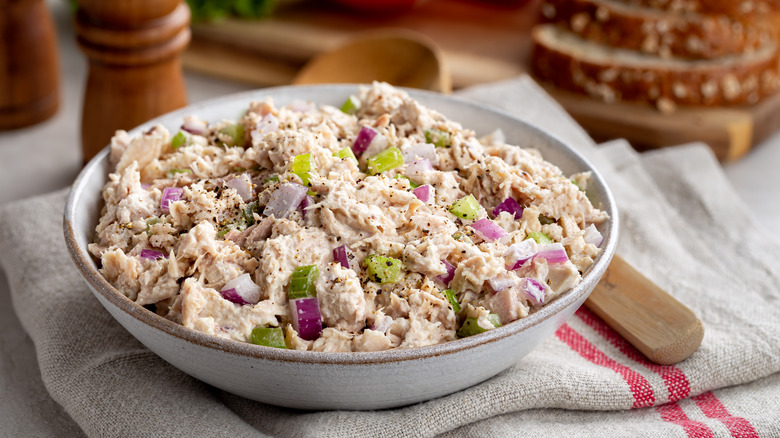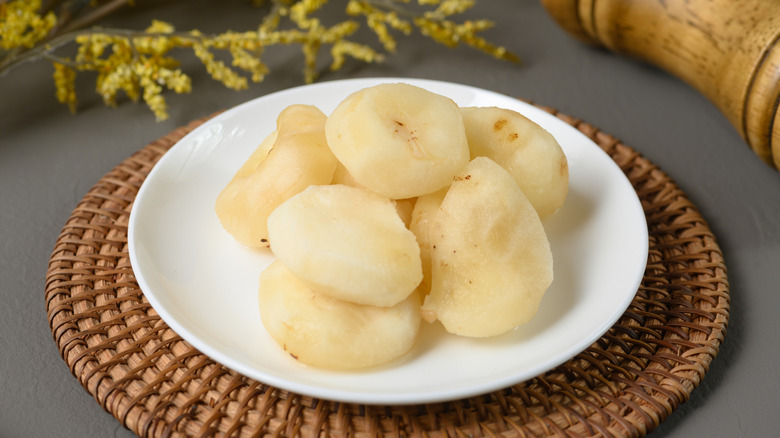The Swap That Gives Tuna Salad Texture While Leaving Out The Celery
Tuna salad is a favorite on your daily lunch rotation, but there's one small snag — the celery is throwing off the balance. Maybe its bitter flavor is off-putting, you're dealing with fibrous celery strings in your teeth, or you rarely have a stalk on hand. The perfect swap? Use water chestnuts in place of celery. It has all the bite of celery without any of the woes, and it's pantry-friendly for added convenience.
This crunchy condiment is actually a tuber(think potatoes and yams), not a nut, with plenty of structure thanks to its water-resilient cell walls. You can expect a crisp bite straight from the can, although we think fresh water chestnuts are better, imparting a sweeter, deeper flavor. No matter which variation you choose, keep in mind that water chestnuts are generally bland. This is a good thing — an overall low flavor profile means they play well with neighboring ingredients and are experts at absorbing spices.
There are more perks to a water chestnut swap, besides the plant's chameleon-like taste. Its crunchiness is more than a textural delight, but also has a practical benefit. You can whip up a batch of tuna salad the night before, or store the leftovers, without worry of the tuber wilting or softening. They pack almost twice as much fiber into a serving as celery, and are an excellent source of potassium, vitamin B6, and a range of antioxidants.
What you need to know when swapping in water chestnuts
Canned water chestnuts are widely available at most major grocery stores, next to canned baby corn and bamboo shoots, often found in Asian or international aisles. There are pre-sliced and whole options. While pre-sliced cans minimize prep, whole canned water chestnuts have a bit more crunch. For the fresh variety, scope out your local Asian supermarket and look for firm, round selections free of soft spots or wrinkles – a sign that water chestnuts are past their prime.
It's best to keep this tuber raw for the crunchiest tuna salad possible; no cooking needed. You can replace your recipe's celery at a 1:1 ratio (for example, swap ½ a cup of celery for ½ a cup of water chestnuts). If you're using a canned variation, rinse the water chestnuts first to remove any metallic flavors imparted by the can. To prep, place the flat side down and slice thin layers, about ⅛ to ¼ inches thick. This mimics the size and shape of celery pieces typically used in most tuna salad recipes, providing a similar texture and bite.
Thanks to the water chestnut's heartiness, you can save any leftovers for your next tuna salad. Canned or partially cut fresh leftovers should be submerged in water, covered, and placed in the fridge to extend their shelf life by a few days. For extended freshness, use filtered water and replace the liquid every day. Fresh, uncut water chestnuts can be refrigerated in a paper bag for up to seven days or frozen for up to six months. Store unopened cans in your pantry for up to five years, and enjoy the convenience of this celery swap — no trip to the produce section needed.

